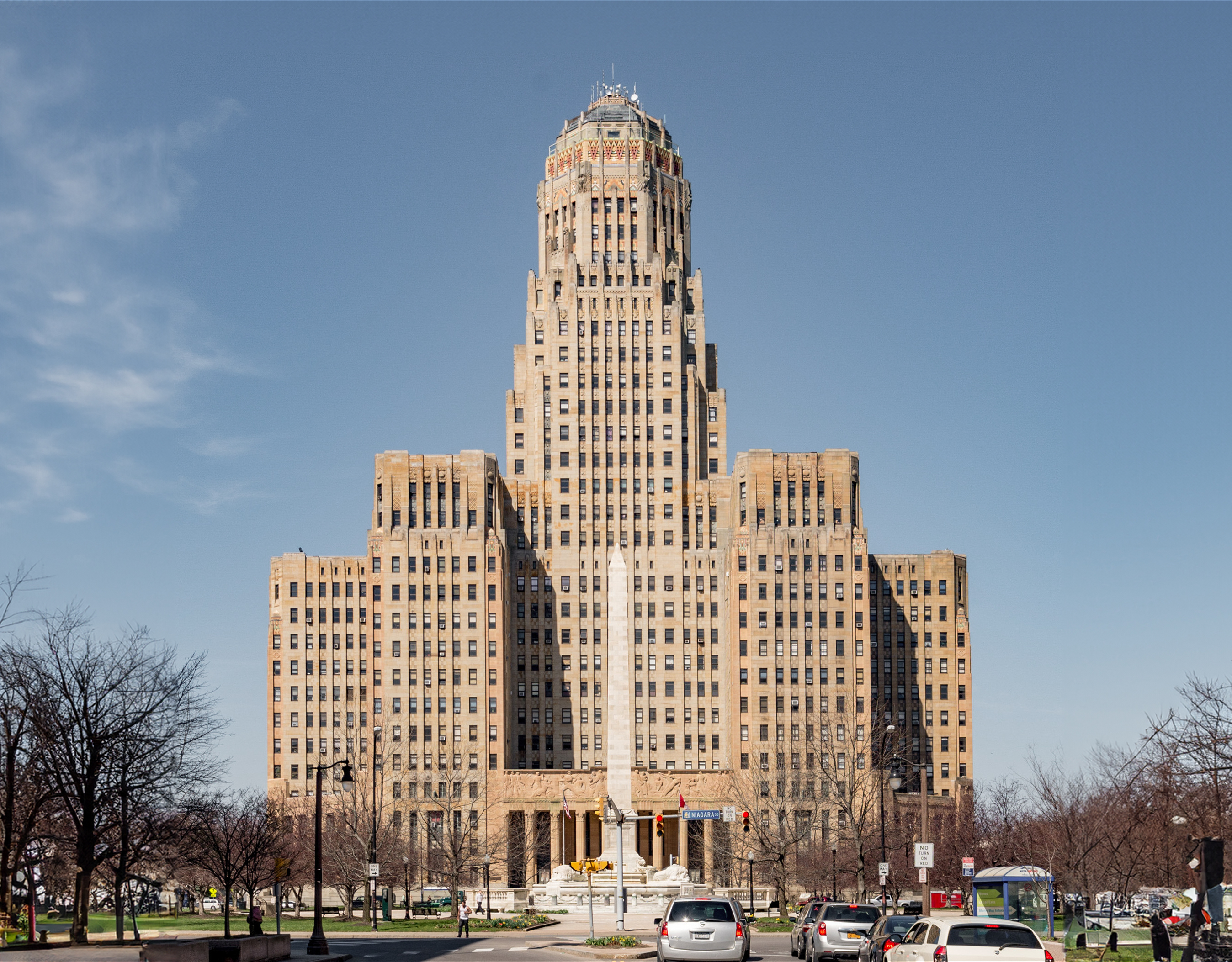The Buffalo City Hall is an Art-deco skyscraper designed by Dietel, Wade & Jones, and built between 1929 and 1932, for a reported $6.85 million dollars, in Buffalo, NY.
Its precise street address is 65 Niagara Square, Buffalo, NY. You can also find it on the map here.
The Buffalo City Hall is a structure of significant importance both for the city of Buffalo and the United States as a nation. The building embodies the distinctive characteristic features of the time in which it was built and the Art Deco style. Because of that, the Buffalo City Hall was officially included in the National Register of Historic Places on January 15th 1999.
Following the building regulations of the time, tall buildings couldn't reach their maximum height all at once. To allow the entry of light and air on the street, the Buffalo City Hall also had to step back as the building rose .
The building underwent a major restoration in 2002. The architect commissioned to undertake this restoration was HHL Architects.


